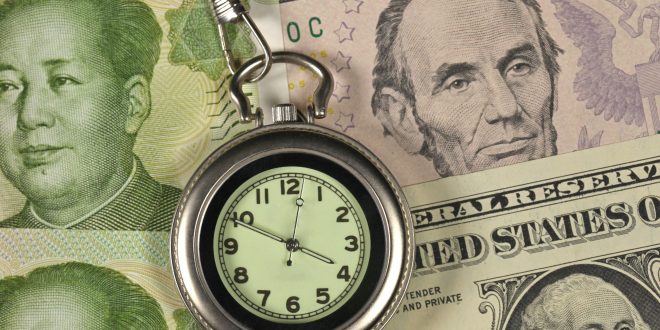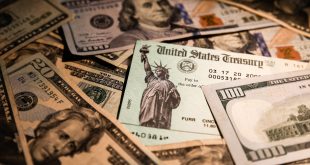The US dollar ended the week with gains, following the fear of dominating of the faltering economic recovery. The US dollar index, which measures the strength of the US currency against a basket of major currencies, rose to 92.64, the index fell to its lowest level in last week’s trading at 92.12 against a peak of 92.85. Below we review the most prominent events of the past week.
ECB
The European Central Bank left monetary policy unchanged as widely expected in the markets but announced the start of slowing the pace of asset purchases under the PEPP program. The European Central Bank decided to leave the interest rates on the main refinancing operations, the marginal lending facility and the deposit facility unchanged at 0.00%, 0.25% and -0.50%, respectively, as expected
.Impact of supply squeeze on inflation to be seen.
Not seeing much in terms of wage rises.
Monitoring second round inflation impact.
Many drivers of inflation are of temporary nature.
Energy base effect is a large component of inflation.
Expecting bottlenecks to be circumvented in first half of 2022.
Risks to outlook broadly balanced.
Activity could outperform if consumers spend more.
Growth could underperform if pandemic intensifies, supply shortages persist.
Eurozone on track for a strong growth in Q3; manufacturing to perform strongly.
Shortages are holding back production.
The labour market is improving rapidly; consumers are cautious.
Some way to go before pandemic damage to economy offset.
Sees 2021 GDP growth at 5% (4.6% in June).
Sees 2022 GDP growth at 4.6% (prev 4.7%), 2023 at 2.1% (unchanged).
Expects inflation to rise further in autumn.
Sees underlying inflation to rise in medium-term.
ECB sees 2021 inflation at 2.2% (prev 1.9% in June).
Sees 2022 inflation at 1.7% (prev 1.5%) and 2023 at 1.5% (prev 1.4%).
Europe
European shares closed lower on Friday, down more than 1% this week, as investors assessed the risks of tighter monetary policies after the European Central Bank signaled a slowdown in bond purchases during the pandemic.
The pan-European Stoxx 600 index fell 0.3% and has fallen in four of the five sessions this week as concerns remain over the slowdown in the global economic recovery.
But sectors that are relatively stable in the face of economic volatility, such as health care and real estate, recorded the largest weekly decline, as investors prepared for a possible recovery in economic growth.
Technology shares in Europe rose 0.7%, while shares in the luxury goods sector received a boost from the 0.8% rise in French LVMH shares after HSBC recommended buying the stock.
Mining companies exposed to China were the highest profit for the day, rising 11 percent.
Chinese President Xi Jinping and his US counterpart Joe Biden held a phone call on Thursday, in which they discussed the need to avoid competition between the world’s two largest economies turning into conflict.
European shares received support after the European Central Bank confirmed that it was not about to stop spending, despite its expectations of higher growth and inflation in the eurozone.
Fresenius Medical Care fell 4.8% after JP Morgan cut its rating on the stock.
Wall Street
Wall Street closed lower on Friday after weekly jobless claims fell to the lowest level in nearly 18 months, quelling fears of a slowing economic recovery, but raising concern that the Federal Reserve may reduce its accommodative policies sooner than expected.
The Labor Department said new jobless claims fell 35,000 to a seasonally adjusted 310,000 in the week to September 4, the lowest level since mid-March 2020. This suggests job growth may be hampered by a labor shortage more than tepid. demand for workers.
Microsoft and Amazon shares fell about 1% each, and are among the stocks that pressured the S&P500 and Nasdaq indices.
The real estate and healthcare indices on the S&P500 declined more than 1% each and were the worst performing sectors out of the 11, while the financials, energy and materials sectors posted modest gains.
Jp Morgan, Wells Fargo, Citigroup and Morgan Stanley rose, tracking a slight rise in benchmark bond yields after the subsidies data.
At 1:01 p.m on Friday. ET, the Dow Jones Industrial Average was up 12.24 points, or 0.04%, at 34,891.62, the S&P 500 was up 2.83 points, or 0.06%, at 4,496.11, and the Nasdaq Composite was up 12.85 points, or 0.08%, at 15,261.11.
Coronavirus
India recorded 28,591 new cases of COVID-19 and 338 deaths in the past 24 hours, the Ministry of Health said on last week.
Added that the total number of cases rose to 33 million and 230 thousand, and deaths to 442 thousand and 655.
On Sunday, Britain recorded 56 new deaths, within 28 days of testing positive for Covid-19, down from 156 cases the previous day.
Also, 29,173 new cases of the virus were recorded, down from 29,547 cases on Saturday.
The Italian Ministry of Health said that it recorded 34 new deaths linked to the Coronavirus today, Sunday, compared to 57 the previous day, and 4,664 new infections, compared to 5,193 on Saturday.
Calendar
The Producer Price Index (PPI) in the US for final demand rose to 8.3% on a yearly basis in August from 7.8% in July. This reading came in higher than the market expectation of 8.2%. the annual reading, the publication revealed that it was the largest advance since the 12-month data were first calculated in November 2010.
UK data-dump for July, released early Friday, coveys that the monthly GDP figure weakened to 0.1% MoM versus 0.6% forecast and 1.0% prior relaese in July. The 3M/3M figures for the growth remains unchanged around 3.6%.
 Noor Trends News, Technical Analysis, Educational Tools and Recommendations
Noor Trends News, Technical Analysis, Educational Tools and Recommendations





